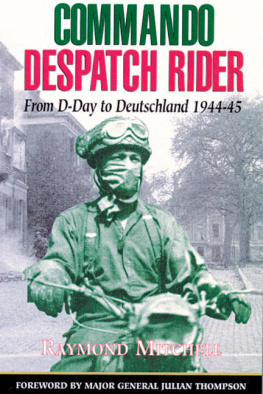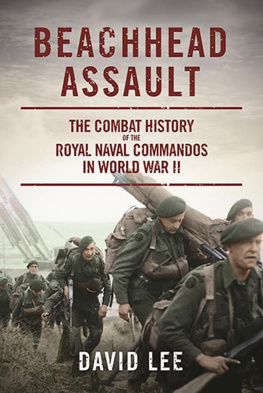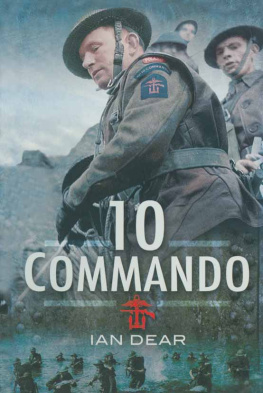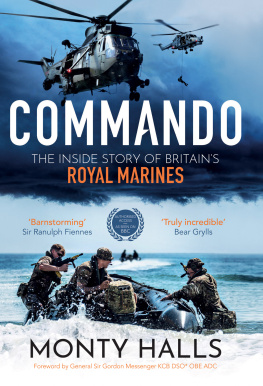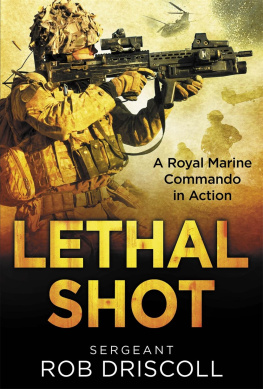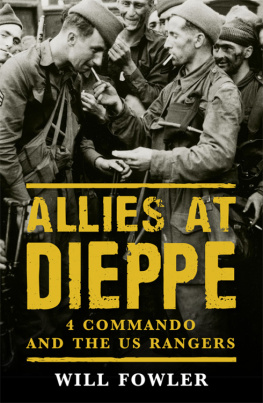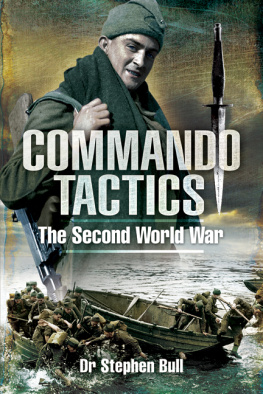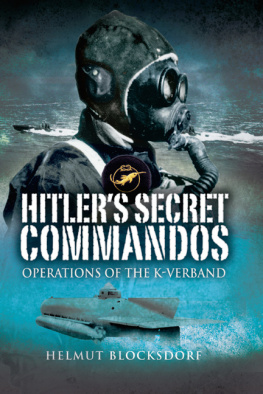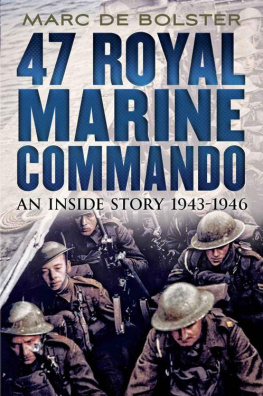
By the same author
Marine Commando, Sicily and Salerno 1943
with 41 Royal Marines Commando, Robert Hale Ltd 1988,
re-issued in paperback 1994.
They Did What Was Asked of Them,
41 (Royal Marines) Commando 19421946
Firebird Books, reprinted 1996.

First published in Great Britain 2001 by
LEO COOPER
an imprint of Pen & Sword Books
47 Church Street
Barnsley
South Yorkshire S70 2AS
Copyright 2001 by Raymond Mitchell
ISBN 0 85052 797 X
eISBN 978 1 78337 929 3
A CIP catalogue record for this book is
available from the British Library.
Typeset in 11/13pt Sabon by
Phoenix Typesetting, Ilkley, West Yorkshire.
Printed and bound by
CPI UK
Dedicated to the memory of
Ply/X 111113 Marine H.T.W.B. (Bill) SWINDALE
No. 41 (Royal Marines) Commando
Killed in Action, 6 June 1944
Lion-sur-Mer, Normandy
a fellow Geordie and good friend
CONTENTS
FOREWORD
by
MAJOR GENERAL JULIAN THOMPSON
CB OBE
Before Ray Mitchell reached the age of 24 he had taken part in four of the major Allied amphibious assaults of the Second World War: Sicily, Salerno, Normandy and Walcheren, all with 41 (Royal Marines) Commando. This book is about the latter two; his experiences in the first two operations are the subject of an earlier book, Marine Commando: Sicily and Salerno 1943 with 41 Royal Marines Commando. His latest book is more than just an account of the great events of June and November 1944, it is also a marine's eye view of the campaign in North-West Europe.
Ray Mitchell kept a diary, which, for security reasons, was forbidden. This, now lodged in the Imperial War Museum, is the basis for his new book. As an author who has spent much time researching in the archives of the Imperial War Museum, I can vouch for the value of books based on diaries written at the time. Time can play tricks with even the sharpest of memories and Ray Mitchell's book is all the more valuable as a testimony to one Royal Marine's experiences because he can refer to his diaries as a backup to his recall of events.
Anyone not familiar with commando soldiering might regard being a despatch rider (DR - or Dog Roger in the phonetic alphabet of the time) as a cushy number. Starting with landing on Sword Beach on D-Day carrying a 75 lb Welbike (folding motorcycle) in his arms, down the see-sawing wooden landing plank of one of the infamous Landing Craft Infantry (Small), Ray Mitchell's experiences as a DR varied from hairy to hilarious', mostly the former.
A DR's life was both lonely and dangerous. Carrying despatches necessitates knowing exactly where you are going and how to get there, including avoiding any route that will lead you straight into enemy hands, all of which requires good map-reading. Road and tracks were usually pinpointed on the enemy's map and treated to frequent doses of artillery and mortar fire. If that was not enough, friendly traffic was an added hazard. DRs were, of course, also required to take their place as riflemen from time to time.
Churchill wrote about the Westkapelle operations at Walcheren, The extreme gallantry of the Royal Marines stands forth. Ray Mitchell was one of the Commando DRs selected to land with his comrades of the 4th Special Service Brigade to capture the five great batteries of coastal guns guarding the entrance to the River Scheldt. He recalls that, in contrast to Normandy five months earlier, The task force had been put ashore, and all craft still seaworthy had been withdrawn. There would be no streams of supplies, no backup, no reinforcements: the Brigade was on its own. The only way off the saucer-shaped island, whose centre had been deliberately flooded, was by silencing the batteries sited on its sand-dune rim, a costly and hazardous operation.
In normal circumstances man proposes, God disposes'. In battle it is the other way around, God, in the form of the higher command, may propose the strategy, but the outcome will ultimately depend upon what someone called the most exclusive club in the world: the relatively small number of those who do the actual fighting. The Royal Marines Commandos occupy a special corner of that club. This is a fascinating account of the second part of one marine's very busy war in that company.
GLOSSARY
| Ack-ack | Anti-aircraft, from early signallers spelling code for radio or telephone e.g. A for Ack, B for Beer, C for Charlie, etc., and was applied to both the guns and to the bursting shells. |
| ADS | Advanced Dressing Station the next stop for a casualty after he had been patched up at his Units RAP (qv). |
| AMGOT | Allied Military Government of Occupied Territories |
| AVRE | Armoured Vehicle, Royal Engineers, basically a Churchill heavy tank but specifically adapted for attacking reinforced concrete fortifications. Its primary armament was a 290mm spigot mortar which hurled a 40-pound missile, known as a flying dustbin, a distance of some 80 yards. |
| AWOL | Absent Without Official Leave. |
| Bangalore Torpedo | A six-foot length of inch diameter steel tubing packed with explosive, used for blowing a gap in barbed wire and detonating mines. Two or more could be fixed together and pushed forward to deal with broad defences. |
| Benghazi Cooker | Metal container, such as a biscuit tin, partially filled with sand which would be partially filled with sand which would be doused with petrol and set alight to heat water for a brew up (qv). |
| Blighty one | A wound that was severe enough to get a serviceman sent back to the UK or Blighty, a corruption of the Hindi word bilayati, meaning foreign. |
| Bren (Gun) | A Light Machine Gun (LMG) named from the first two letters of the Czechoslovakian town Brno where it originated and Enfield where it was later manufactured 0.303 inch/7.65mm calibre. |
| Brew-up | 1. Make a brew of tea. 2. A tank bursting into flames after being hit by a shell. |
| Buffalo | Common name for a Landing Vehicle Tracked, (LVT) qv. |
| Burton (Gone for a ) | Been killed. Originating in the RAF, as the medical centre for new intakes in Blackpool was set up in the former premises of Burton the Tailor. |
| Buzz | Naval term for rumour, hence buzzmonger, one who spreads them. |
| CCS | Casualty Clearing Station the primary function of which was to ensure that all casualties were fully documented. |
| Compo | Composite. The standard Field Rations of WWII. All the creature needs for fourteen Service Personnel for one day tinned food, cigarettes (seven per person per day), confectionery and toilet paper were packed in stout hardboard boxes and labelled A to E, according to the food content. |
| CS | Continuous Service. The usual name for a regular Royal Marine as opposed to an HO (qv). |
| D-Day | The day on which any planned military operation was to be initiated, now synonymous with 6 June 1944 the biggest one of WWII. |
| Dead ground | Any area which lay below the line of enemy small arms fire (qv) and was therefore safe from that form of attack. |
| Dhobying | Washing clothes in the Indian Army a dhobi was a washerwoman. |
| Dog Tags | Identity discs, two in number and of different shapes, stamped with the bearers Name, Regimental Number and Religion. All Service personnel were required to wear them around their necks and, if killed, one was snipped off for the records, while the other would identify the dead man. |
Next page
